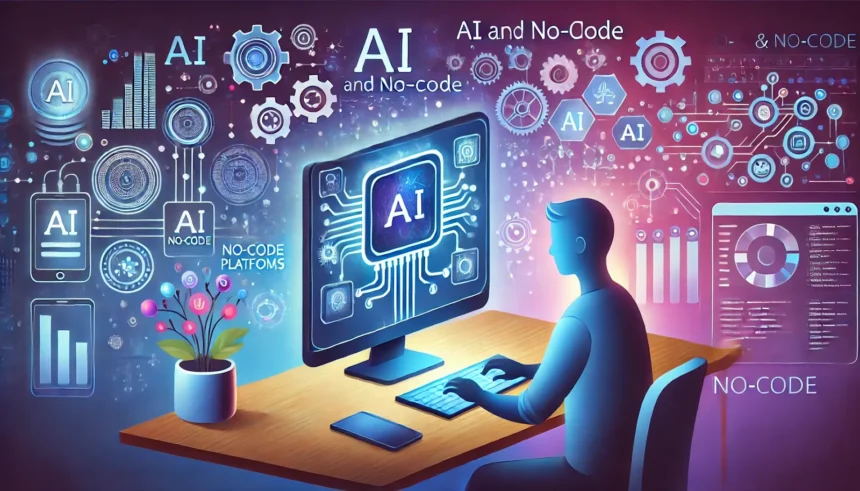Artificial Intelligence (AI) is transforming the way we live, work, and interact and it’s no longer reserved for large tech corporations. Whether you’re a student, entrepreneur, researcher, or curious innovator, learning how to make your own artificial intelligence is now easier than ever thanks to open-source tools, online resources, and cloud-based frameworks.
If you’ve ever wondered how to make your own artificial intelligence, this comprehensive guide will walk you through everything you need to know, from understanding the core concepts to building, training, and deploying your first AI model.
Understanding What Artificial Intelligence Really Is
Before diving into how to make your own artificial intelligence, it’s essential to understand what AI actually means. AI refers to the simulation of human intelligence in machines. These systems can learn from experience, adapt to new inputs, and perform tasks that normally require human cognition.
AI is built upon a few foundational pillars:
- Machine Learning (ML): The process through which machines learn from data without being explicitly programmed.
- Deep Learning: A subset of ML that uses neural networks to process large and complex datasets, mimicking how the human brain works.
- Natural Language Processing (NLP): The field that enables machines to understand and generate human language.
- Computer Vision: The technology that allows computers to “see” and interpret images or videos.
When you learnhow to make your own artificial intelligence, you’ll work with one or more of these components depending on your goal; whether it’s creating a chatbot, detecting fraudulent transactions, or analysing medical scans.
How to Make Your Own Artificial Intelligence
Step 1: Define the Problem You Want Your AI to Solve
The journey of making your own artificial intelligence begins with defining a clear problem. AI is not a magical solution that fits everything; it’s a tool that performs best when it has a well-defined purpose.
Ask yourself:
- What real-world problem am I trying to solve?
- What kind of data is available?
- Who will use this AI and how will it help them?
For instance, you could build an AI to:
- Predict stock prices or market trends.
- Detect fake news on social media.
- Analyse customer feedback for sentiment.
- Recommend personalised content or products.
- Recognise handwritten text or faces in images.
Clearly defining your use case ensures your AI remains focused, measurable, and impactful.
Step 2: Collect and Prepare Quality Data
If AI were a human, data would be its food. The most crucial step in how to make your own artificial intelligence is gathering clean, reliable, and representative data. Without quality data, even the most advanced algorithms will fail.
Sources of data can include:
- Public datasets from platforms such as Kaggle, Google Dataset Search, or UCI Machine Learning Repository.
- Data collected from sensors, surveys, or APIs.
- Synthetic data generated through simulations.
Once collected, your data must be cleaned and pre-processed, removing duplicates, correcting errors, and converting it into a structured format. You’ll also need to split your dataset into training, validation, and testing sets to ensure your model learns effectively and performs well on new data.
Remember: the more accurate and diverse your data, the smarter your AI will be.
Step 3: Choose the Right AI Tools, Languages, and Frameworks
Choosing the right toolkit is critical in making your own artificial intelligence. Thankfully, today’s AI ecosystem is rich with open-source frameworks that simplify complex tasks.
Here are the most popular tools for building AI:
- Python: The most widely used programming language in AI due to its simplicity and extensive library support.
- TensorFlow: A powerful framework by Google for deep learning applications.
- PyTorch: A flexible, beginner-friendly alternative widely used in research and production.
- Scikit-learn: Ideal for traditional machine learning tasks such as regression and classification.
- Keras: Simplifies neural network creation with user-friendly APIs.
You can also use low-code or no-code AI tools like Teachable Machine or Lobe.ai to experiment without heavy programming knowledge.
Step 4: Build and Train Your AI Model
Now comes the heart of the process, training your AI to learn from data. This is where your model analyses patterns, makes predictions, and improves over time.
Here’s how it works:
- Select a model type — linear regression, decision tree, convolutional neural network, etc.
- Feed it data — the model learns by adjusting internal parameters (called weights).
- Test and validate — evaluate how well your AI performs using unseen data.
- Optimise performance — tweak settings, add layers, or improve data quality to boost accuracy.
For instance, if you’re training an AI to recognise cats and dogs, you’ll provide thousands of labelled images. Over time, your AI will learn to distinguish between them by detecting visual patterns.
Training can take hours or days depending on the dataset size, hardware used (CPU/GPU), and algorithm complexity.
Step 5: Evaluate, Optimise, and Iterate
Building AI is not a one-time effort. Once your model is trained, you’ll need to test its performance using metrics like:
- Accuracy: How often the AI makes correct predictions.
- Precision and Recall: Measures of how reliable its classifications are.
- F1 Score: A balance between precision and recall.
If results are poor, revisit your process, improve your data, fine-tune the model, or try different algorithms. Iteration is the key to mastery when learning how to make your own artificial intelligence.
Step 6: Deploy Your AI in the Real World
After successfully training and testing your model, the next step is deployment, making your AI accessible to users. This could mean:
- Integrating it into a web application using Flask or Django.
- Deploying it via cloud platforms such as AWS, Google Cloud, or Microsoft Azure.
- Embedding it in mobile apps through frameworks like TensorFlow Lite.
You’ll also need to set up monitoring tools to ensure the AI continues to perform accurately over time, even as new data flows in.
Step 7: Keep Learning and Improving
Understanding how to make your own artificial intelligence is a continuous journey. AI models evolve, data changes, and technology advances rapidly. The best AI developers continuously learn new frameworks, explore updated algorithms, and monitor ethical implications such as bias and data privacy.
Participate in online AI communities, read research papers, and experiment with new datasets. Over time, you’ll gain the experience needed to build complex systems like chatbots, recommendation engines, or computer vision models.
Ethical Considerations in AI Development
As you learn how to make your own artificial intelligence, remember that building ethical AI is just as important as building powerful AI. Always consider:
- Data Privacy: Protect personal information used in training data.
- Bias and Fairness: Avoid discrimination in AI predictions or outputs.
- Transparency: Ensure users understand how and why your AI makes decisions.
Responsible AI builds trust, promotes fairness, and ensures technology benefits society as a whole.
FAQs on How to Make Your Own Artificial Intelligence
Can I make my own artificial intelligence without coding?
Yes. Platforms like Lobe.ai, Teachable Machine, and Peltarion let beginners learn how to make your own artificial intelligence without writing any code.
What tools do I need to make an AI?
Use tools such as Python, TensorFlow, and Scikit-learn if you can code; otherwise, no-code options like Google AutoML and Lobe.ai are great starting points.
How long does it take to build an AI?
It depends on your goal. A basic chatbot might take a few hours, while complex models could take weeks or months to train and refine.
Is building an AI expensive?
Not necessarily. Many AI frameworks and cloud tools are free or offer trial versions, making it easy to learn how to make your own artificial intelligence without major costs.
Do I need a powerful computer to make AI?
For small projects, a regular laptop works fine. Larger models may require cloud platforms like Google Colab or AWS for extra computing power.






